What is Sleep Apnea
Sleep apnea is the most common sleep disorder, affecting millions of Americans. The most common type of sleep apnea is obstructive sleep apnea or OSA. Obstructive sleep apnea is the periodic cessation of breathing during sleep due the blockage of the airway.
The cessation of breathing caused by this blockage may be sudden and prolonged. The result is a serious drop in oxygen levels and a significant rise in blood pressure. Sufferers may have from a few to several hundred apneic episodes in one night.
Muscles in the back of the throat which support the soft palate, the uvula, the tonsils, and the tongue over-relax. This makes it impossible to breathe properly for more than 10 seconds at a time. Your brain realizes that it needs oxygen and wakes you up until you start breathing normally again.
Most sleep apnea sufferers gasp, snort, or make a choking sound when this happens. This pattern may repeat itself all night long for as often as 30 or more times per hour. These episodes can be measured by sleep testing providing the patient with an AHI (Apnea-Hypopnea Index) rating. An AHI of more than 5 is abnormal and 30 is considered to be severe obstructive sleep apnea.
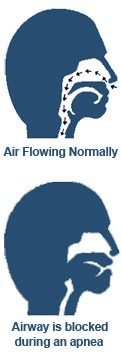
It’s common for people not to remember these awakenings and believe they slept through the night. The problem is that normal sleep patterns are severely disrupted, and sufferers don’t go through the stages of sleep as they should. The result is that most people with sleep apnea aren’t aware of it, so it continues untreated, posing quite a number of health risks.
Chronic Fatigue

Daytime Sleepiness

Brain Fog

Can’t Fall Asleep
Sleep apnea is a potentially life-threatening condition causing a decreased oxygen supply to vital organs. The problem is usually recognized by loud, chronic snoring, though snoring does not necessarily mean one has sleep apnea.
Fortunately, sleep apnea can be diagnosed and treated by a qualified Sleep Physician. There are a number of treatment options available, and research into additional options is ongoing.
Types of Sleep Apnea
The main types of sleep apnea are called obstructive, central, mixed, and complex. In all cases, a person’s sleep is fragmented and repeatedly disrupted throughout the night. This results in fatigue and a myriad of other health issues and concerns.
Obstructive Sleep Apnea
Obstructive sleep apnea (OSA) is caused by a blockage of the airway, usually when the soft tissue in the rear of the throat collapses and closes during sleep. The disruption of the ability to breathe normally due to this blockage is called an apnea.
Someone with obstructive sleep apnea usually begins to snore quite heavily after they fall asleep. It’s common for the snoring to become louder until it is interrupted by a long silent period during which they are not breathing.
Usually this is followed by a choking sound, a gasp for breath, or a loud snort as the person attempts to breathe. This pattern will repeat itself throughout the night.
Many people wake up unrefreshed in the morning and feel sleepy or drowsy throughout the day. This is called Excessive Daytime Sleepiness (EDS).
Obstructive Sleep Apnea Can Destroy Your Health
If you are snoring and restless all night and your sleep quality is poor, you can almost double your risk of death from cardiovascular disease and lose about 10 years off your life.
While weight loss can be effective for those with mild sleep apnea, those with moderate to severe obstructive sleep apnea usually require pressurized air at night with a device called a CPAP. A CPAP provides Continuous Positive Airway Pressure which stops the snoring and allows you to breathe comfortably during the night.
Patients who are unable to tolerate CPAP may be treated with an implantable device called Inspire Therapy. Inspire is the only FDA approved obstructive sleep apnea treatment that works inside the body with the patient’s natural breathing process. The system is implanted under the skin during a short surgical procedure in an outpatient setting.
Central Sleep Apnea
Central sleep apnea or CSA is due to the temporary absence of a signal from the brain’s respiratory center to the muscles that control breathing. The brain fails to send the proper signals to the muscles responsible for inhaling and exhaling.
Carbon dioxide levels in the blood rise and oxygen levels fall. The person is aroused by the inability to breathe properly and then normal breathing resumes.
Central sleep apnea can happen without any pre-existing conditions. Patients with heart conditions, including Congestive Heart Failure (CHF), Atrial Fibrillation (AFib), and neurological disorders, such as strokes, are more likely to experience central sleep apnea. Other causes are brain stem/spinal cord disorders, the use of opiates like morphine, oxycodone, and codeine. Sleeping at high altitudes, especially if your body is not used to it can also be a problem.
Like obstructive sleep apnea, central sleep apnea leads to a lack of quality sleep leaving the heart and brain struggling to keep up in the daytime.
Diagnosing Central Sleep Apnea
Central sleep Apnea is most often diagnosed by taking and In-Lab Sleep Study or Polysomnogram. These studies are prescribed by the sleep physician to determine whether a patient has obstructive or central sleep apnea and the level of severity.
Treating Central Sleep Apnea
CPAP or Continuous Positive Airway Pressure devices which stop the snoring and allows you to breathe, are often the treatment for Central Sleep Apnea.
Those who can’t tolerate CPAP may be treated with an implantable device called the remedē® System, which stimulates a nerve in the chest to send signals to the muscle that controls breathing.
The remedē® System monitors and stabilizes the breathing pattern to restore sleep.
Mixed Apnea
Mixed apnea is a combination of central and obstructive apnea and is fairly common. It occurs most often in infants or young children who have abnormal control of their breathing.
When the symptoms of obstructive sleep apnea are treated, the brain is still unable to control the patient’s breathing. Though treated for obstructive sleep apnea, the patient will still suffer from central sleep apnea.
Complex Sleep Apnea
Complex sleep apnea first presents itself as obstructive sleep apnea, but when treated with a CPAP or bilevel treatment, a patient still does not breathe normally or get a healthy night’s sleep.
Complex sleep apnea consists of all or mostly obstructive apneas which turn into all or predominantly central apneas. Patients with this condition are often helped by adaptive servo ventilation (ASV or VPAP) treatment.
Causes of Sleep Apnea
Regardless of a particular cause, sleep apnea occurs when an individual is not getting enough oxygen into their lungs while sleeping. When one is awake, their airways are somewhat stiff, open, and free to let air flow into the lungs, but when sleeping, the throat muscles and tongue tend to relax. Relaxed muscles in your throat don’t normally block your airway, but with sleep apnea, your airway becomes more narrow or blocked.
One of the most common causes of sleep apnea is obesity. Excess weight, especially in the trunk and neck area presses down on the tissues surrounding the airway making it difficult to pass air into the lungs.
This becomes a vicious circle as the lack of good quality sleep reduces any motivation to get enough exercise to help maintain proper weight. The lack of exercise contributes to obesity, which in turn contributes to sleep apnea.
Obstructive Sleep Apnea is most common in obese middle-aged men, but can occur in men and women of any age.
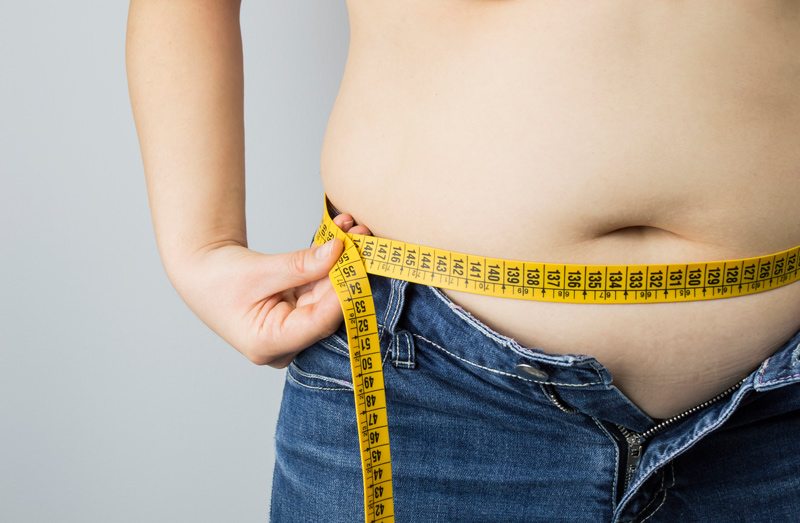
Another cause is having enlarged tissues of the mouth and throat such as a large tongue, tonsils, or adenoids. This is one of the most common causes for sleep apnea in children. Certain medications, especially sedatives can cause the muscles and tissues in the throat to relax and narrow the airway. Certain craniofacial abnormalities, Marfan’s Syndrome, and Down Syndrome can interfere with breathing and cause sleep apnea.
Most Common Risk Factors

Causes and Risks Factors
- Overweight
- Over 40
- Male
- African-American
- Increasing Age
- Family History
- Smoker
- User of Alcohol
- Post-Menopause
- Certain Medical Conditions
- Large Neck
Symptoms of Sleep Apnea

The most obvious symptom of sleep apnea is loud and continuous snoring that may pause and be followed by gasping or choking sounds.
Family members or bed partners will notice this symptom before the person with sleep apnea is even aware of it. Their sleep quality is also often seriously affected.
Sufferers are usually tired during the day and often don’t know why. They usually have to fight off the desire to take a nap and many who do take a nap fail to feel refreshed afterward.
Other common symptoms are irritability, trouble concentrating, and forgetfulness. This is understandable with so many interruptions to sleep during the night.
As time goes on complete mood and behavior changes may occur. Weight gain is common due to a slowed metabolism and lack of energy required to get enough exercise. Many sleep apnea sufferers wake up in the morning with a headache, sore throat, and a dry mouth.
Most Common Symptoms

- Morning Headaches
- Dry Mouth
- Sore Throat
- Slow Metabolism
- High Blood Pressure
- Gastric Reflux
- Diabetes
- Poor Work Performance
- Poor Memory
- Depression
- Disorientation
- Fatigue
Treatment of Sleep Apnea
Seeking Treatment Can be Critical
It is extremely important to seek treatment for sleep apnea due to the risk of high blood pressure, stroke, and heart disease. Treatment will help restore the appropriate air flow and allow for a more restful sleep with less frequent interruption. A sleep study will provide the information necessary for diagnosis and determination of the best treatment options.
Many people suffer needlessly from this disorder. Treatments are available. It’s important to see a sleep physician if you believe you may be suffering from sleep apnea. Do it before it causes serious damage to your health and quality of life.
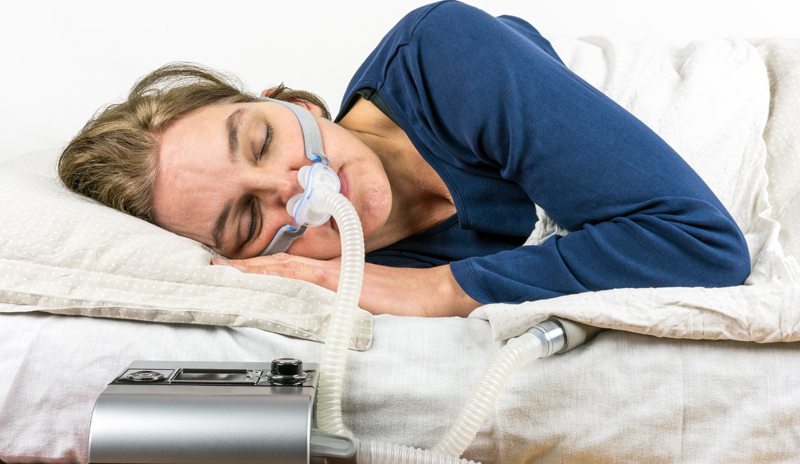 CPAP/BiPAP
CPAP/BiPAP
One of the most successful treatments for sleep apnea is Continuous Positive Airway Pressure (CPAP) or Bilevel Positive Airway Pressure (BiPAP). The air pressure holds the throat open when you are sleeping which prevents the apnea and snoring.
These machines are becoming a lot smaller, quieter, and more easily customized to provide a more comfortable fit and pressure. The masks can be as small as nasal prongs or more encompassing as needed for comfort.
 Inspire Therapy
Inspire Therapy
Inspire Therapy is an innovative treatment for obstructive sleep apnea for those who struggle with or unable to tolerate CPAP.
While asleep, every breath you take is monitored. Based on your breathing patterns, this system delivers mild stimulation to the hypoglossal nerve. This nerve controls the movement of your tongue and other muscles to keep your airway open.
Inspire therapy is FDA approved and clinically proven to significantly reduce sleep apnea events and improve quality of life for the patient and their families.
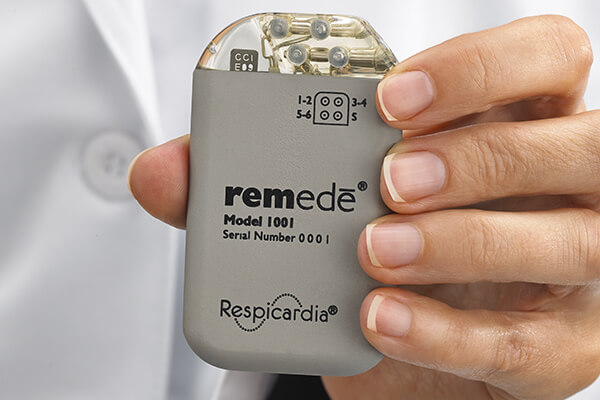 The remedē® System
The remedē® System
The remedē® System is an innovative implantable system for treating moderate to severe central sleep apnea (CSA) in adults who struggle with CPAP. It is FDA approved and clinically proven to reduce sleep apnea events.
This is an implantable system which stimulates a nerve in the chest to send signals to the large muscle between the chest and abdomen. These signals stimulate breathing in the patient in the same way that the brain does.
The remedē treatment does not require a patient to wear anything on their face and needs no additional equipment at home.
 Dental Devices
Dental Devices
Mandibular devices treat apnea by pulling the jaw forward to open the airway behind the tongue. They are often custom made to be as comfortable and effective as possible.
These oral appliances often provide help for mild cases of obstructive sleep apnea. Our sleep dentists can see if these are a good option for you.
Positional Therapy
Some patients only experience sleep apnea when sleeping on their back. Positional therapy sometimes involves special devices to help you maintain a side position to effectively reduce or eliminate your apneic events.
Weight Reduction
Weight reduction can be effective for those with mild sleep apnea. Those with moderate to severe sleep apnea usually require pressurized air at night with a CPAP or BiPAP device to stop snoring and breathe comfortably during the night.
Nasal Devices – Provent
Provent is a nasal device that is worn at night to create a back pressure from the nose into the airway. This device keeps the airway open and prevents apneas from occurring.
Surgery
Tonsillectomy, laser procedures, uvulopalatopharnygoplasty, are procedures that can open the airway and help sleep apnea. Our ENT specialists can discuss if surgery is right for you.
Sleep Apnea and High Blood Pressure
Individuals who suffer from moderate to severe sleep apnea are at risk for high blood pressure or hypertension. Because a huge percentage of sufferers are overweight, they are already at risk for high blood pressure. Sleep apnea only exacerbates the situation, significantly increasing the health risks.
Patients with obstructive sleep apnea often have blood vessel impairment that could lead to high blood pressure and even heart disease. The endothelium is the layer of cells lining the blood vessels which regulates blood pressure. Diabetes, high blood pressure, high cholesterol, and congestive heart disease damage the endothelium. This damage leads to higher blood pressure levels and more blood vessel damage. Sleep apnea can also cause damage to the endothelium because it causes low blood oxygen levels (hypoxemia) and high blood pressure.
Sleep Apnea and Obesity
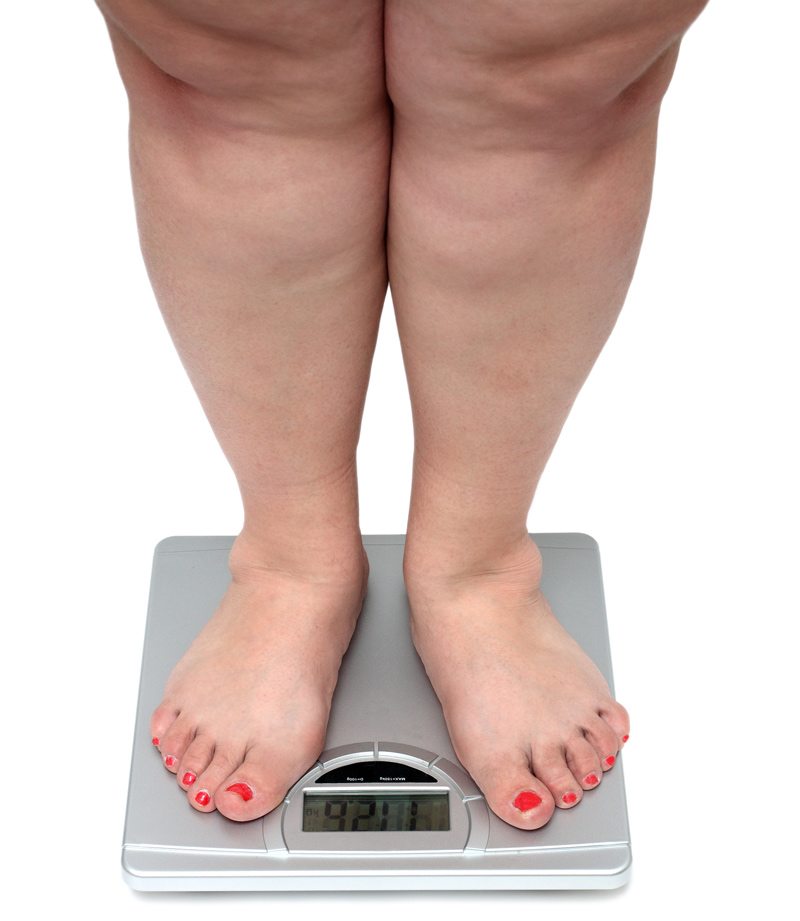
According to the Centers for Disease Control and Prevention, approximately one in six Americans are obese, a statistic which has tripled since 1980. The statistics regarding obesity in children are equally abysmal. Read more about how sleep apnea is tied to obesity in children.
The reasons for the increase in obesity are many. We eat larger portions of food than ever before. We eat foods that are higher in sugar, fat, and calories. Healthy foods and whole foods are often harder to get and more expensive. We lead much more sedentary lifestyles than ever before. When our caloric intake rises and the expenditure of calories decrease, the result is weight gain.
Not only can obesity contribute to cardiovascular disease, diabetes, hypertension, some types of cancers, and even depression, but it can also lead to sleep apnea. Conversely, sleep apnea can lead to obesity.
Untreated sleep apnea may lead to obesity and weight gain. The hormones responsible for appetite and hunger, leptin and ghrelin, are adversely affected by this disorder which leads to increased carbohydrate cravings and weight gain. Obese patients often have other medical issues which can further complicate the problem.
Improving sleep, can dramatically improve these hormones which can help you control your weight. In turn, the weight reduction also leads to an improvement in the severity of sleep apnea. Anyone struggling with weight loss should talk to their doctor and consider further evaluation for sleep apnea.
Sleep Apnea and Cardiovascular Disease
In adults, untreated sleep apnea causes extra stress on the body. The heart and vascular systems are particularly sensitive to this stress. This poses a risk for high blood pressure, heart disease and stroke. In one study, patients with untreated sleep apnea had a higher risk of dying from heart disease, having a heart attack or stroke than those who underwent treatment (Lancet 2005). This was attributed to the fact that sleep apnea increases inflammation and reduces blood sugar control. Both are known to be strongly linked to heart disease (Chest 2006, AJRCCM 2005).
Sleep apnea also affects heart rhythms. Of patients with sleep apnea, 32-82% were also found to have atrial fibrillation. Patients who underwent cardioversion to treat their atrial fibrillation, and were treated for sleep apnea, were more likely to be converted into normal heart rhythms. Those untreated, had a high rate of recurrent atrial fibrillation (Sleep Medicine 2009).
Sleep Apnea and Asthma
Many people suffering from asthma, during waking hours, learn to recognize their most common triggers and use their inhalers to open up their airways. But many asthmatics struggle with breathing while they sleep. To make things worse, many who suffer from asthma, also have obstructive sleep apnea. Many studies are being done to understand how sleep apnea affects nocturnal asthma and how nocturnal asthma affects sleep apnea.
Some test results suggest that sleep apnea can trigger nocturnal asthma attacks. Obstructive sleep apnea and nocturnal asthma both come under the classification of sleep disordered breathing. It is not uncommon that one can be mistaken for the other. The symptoms are similar and nocturnal asthma may even mimic obstructive sleep apnea on a polysomnogram. While nocturnal asthma and OSA may overlap, one condition can worsen the other.
Patients suffering with both conditions should undergo careful diagnosis by both pulmonary and sleep physicians. This should include monitored testing in a sleep lab. Effective treatment of one depends upon the successful treatment of the other.
Effects of Sleep Apnea
- Hypertension
- Heart Failure
- Oxygen Starvation
- Stroke
- Kidney Failure
- Sleep Deprivation
- ADD or ADHD Symptoms
- Diabetes
- Metabolic Stress
- Inability to Focus
- Impotence
- Fibromyalgia
